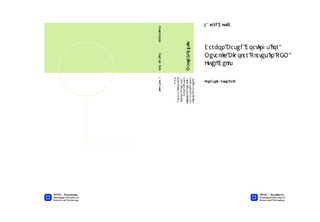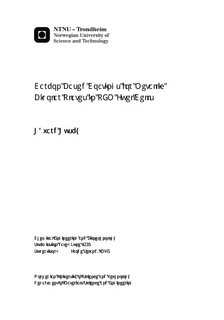| dc.description.abstract | Global warming and the climate changes are issues that concern everyone. The transition to other energy carriers than fossil fuels is a key barrier if we are to reduce our dependence on oil. Hydrogen is forecasted as the energy carrier of the future, and one of the most efficient ways to convert hydrogen to electrical, useful energy is to feed it to the anode side of a polymer electrolyte (PEM) fuel cell. Oxygen (usually in the form of air) is supplied to the cathode side and the only products are water, electricity and some heat.A key component in PEM fuel cells are the bipolar plates that facilitate gas flow, electron transfer, heat and water removal. The bipolar plates contribute greatly to both weight and cost of PEM fuel cells, and there is continuous development in making cheap, durable, light and efficient bipolar plates.In this work we attempted to coat stainless steel (316L) plates with a coating consisting of graphite and carbon black mixed with epoxy. The goal was to get a coating that conducts electrons while still protecting against corrosion. The coatings were sought further improved by adding Teflon particles. This was done to get the coating more hydrophobic, and thus a better corrosion protection of the underlying stainless steel substrate. Plates were glass blasted prior to coating to improve adhesion.Coatings were thinned with xylene and sprayed onto the plates with an air brush. The plates were then pressed in a ?Carver? hot-press to achieve minimum porosity. The coated plates were examined in a contact resistance apparatus, subjected to linear sweep voltammetry and chronoampereometry, the contact angles were measured, the surface roughness measured and SEM images are taken.Plates pressed at 2670 N cm-2 for 30 minutes with 4.8 vol% Zonyl in the coating performed best prior to electrochemical measurements both for the glass blasted plates and for the as-delivered plates. The contact resistances measured at 147 N cm-2 compaction pressure was 11.3 and 10.6 mOmega cm2 respectively. This is close to the goals set by DOE to reached by 2020 (10 mOmega cm2 at 138 N cm-2). The contact resistances for all coatings tested increased very much after the electrochemical testing, and all were far above the goals set by DOE.A correlation was found between the coating thickness and the current densities measured during the potentiostatic measurements. The current densities increased with increasing coating thickness. Possible mechanisms and reasons for this are discussed, and a combination of carbon corrosion and crevice corrosion is suggested as explanation.A possible method for anchoring the coating to the substrate while protecting the contact points from degradation during electrochemical measurements was suggested. By pressing the coating into carefully controlled voids, connections between the graphite in the coating and the metal substrate might be retained, even if the connection between main substrate surface and the coating is broken. This effect can explain the differences seen between the plates coated in the project work, and the metal sheets coated in this work. | nb_NO |

